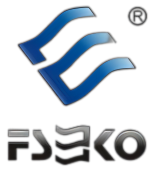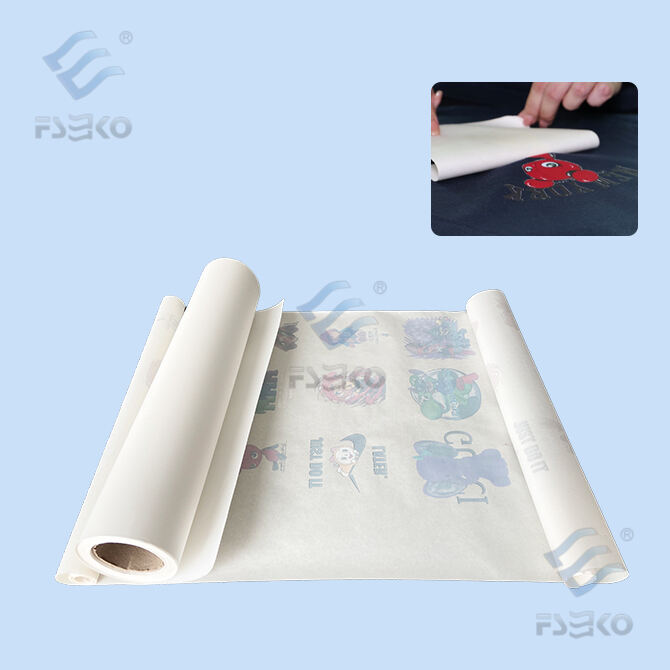What Makes DTF Paper a Game-Changer in Custom Printing?
Defining DTF Printing and Its Core Components
Direct-to-film (DTF) printing has rapidly become a preferred method in the custom printing industry due to its unique combination of technology and materials. DTF distinguishes itself by utilizing specialized textile pigment inks, PET transfer films, and thermoadhesive powder adhesives, all of which work together to produce vibrant, sharp images. Understanding DTF printing technology, particularly its core components, is essential for optimizing print quality and efficiency. The process begins with printing a design on a DTF film, followed by applying a layer of thermoadhesive powder, which ensures the design perfectly adheres to various fabric types upon heat pressing. This combination not only enhances durability but also allows for printing on diverse materials, making DTF a versatile and effective printing solution. Moreover, the DTF technique bypasses the need for pre-treatment of fabrics, unlike DTG printing, saving both time and resources.
Why DTF Outperforms Traditional Transfer Methods
DTF printing is celebrated for outperforming traditional transfer methods, offering several advantages that enhance its appeal for businesses involved in custom printing. One of its standout features is a quicker setup time compared to methods like screen printing, which is known for its labor-intensive processes. DTF's ability to quickly produce intricate designs and a wide range of colors makes it more versatile, allowing printers to cater to diverse customer needs efficiently. The adhesion properties of DTF are particularly noteworthy; its prints are known for their superior durability, resisting wear and washing, maintaining vibrancy far longer than those produced by conventional methods. This makes DTF ideal for applications requiring lasting quality, such as apparel and textiles subjected to frequent use. In essence, DTF's combination of high-quality output and operational efficiency positions it as a game-changer in the custom printing landscape.
Key Advantages of Using DTF Paper in Textile Printing
Versatility Across Fabrics: Cotton, Polyester, and Beyond
The versatility of DTF (Direct to Film) paper is a significant advantage in textile printing, allowing it to be used across a broad range of fabrics, including cotton, polyester, and blends. This adaptability means that businesses can cater to diverse client needs without being restricted by fabric type. Statistics also support that DTF provides better fabric compatibility than other methods, making it a preferred choice for manufacturers aiming for versatility. The flexible use of DTF paper ensures that businesses can meet the demands of various markets, from casual apparel to sophisticated fashion items, seamlessly.
Superior Color Vibrancy and Wash Resistance
DTF printing is renowned for its superior color vibrancy, which enhances the visual appeal of textile products significantly. This is because the high-quality inks designed for DTF ensure that colors are not only bright and vivid but also long-lasting. The wash resistance of DTF paper is another exceptional advantage; it maintains color integrity even after multiple wash cycles, ensuring high durability. Professionals and studies often highlight these benefits, indicating that DTF prints retain their vibrant colors and softness, making them an ideal choice for producing high-quality garments with lasting impressions.
Cost-Effective Production for Small Batches
DTF printing presents a cost-effective solution, especially when producing smaller batches compared to traditional printing methods. The process minimizes waste by allowing precise control over printing requirements, which optimizes production costs. This capability translates to profitability for businesses that wish to maintain low minimum order requirements without compromising on print quality. By using DTF, companies can deliver customized products efficiently, catering to niche markets and clients seeking exclusivity without the financial burden often associated with smaller runs.
In conclusion, DTF paper stands out in textile printing for its versatility, vibrancy, and cost-effectiveness. These advantages position DTF as a formidable method for businesses looking to innovate and excel in fabric customization.
How to Achieve Professional Results with DTF Printing
Step-by-Step Guide to Printing on DTF Paper
To achieve the best results with DTF printing, it's crucial to follow a systematic approach. Here's a detailed step-by-step guide:
- Preparation: Begin by selecting a design using graphic software like Adobe Illustrator or Photoshop.
- Printing Setup: Use a printer optimized for DTF, ensuring it's loaded with high-quality DTF inks.
- Printing: Print the design onto DTF film using precise settings for color and vibrancy.
- Adhesive Powder: Apply an even layer of adhesive powder on the printed surface.
- Heat Transfer: Place the film on the fabric and use a heat press at specific settings for temperature and pressure.
- Peel and Cool: After transferring, allow the print to cool before peeling off the film for a durable finish.
By adhering to these steps and using appropriate equipment like dedicated DTF printers, you can enhance the quality of your prints substantially.
The Role of Heat Lamination Film in Durability
A key component in ensuring the durability of DTF prints is the use of heat lamination film. This film serves to protect prints, extending their lifespan by preventing fading and wear. It also provides an additional layer of protection against environmental factors, making it ideal for items that face frequent washing or exposure.
When choosing a heat lamination film, it's important to select a type that complements your DTF prints, as different films may offer varied resistance degrees or finish options. This choice will directly impact the vibrancy and longevity of your prints. Experts often recommend eco-friendly laminating films due to their reduced environmental impact and effective protection.
Avoiding Common Mistakes in Adhesive Powder Application
Applying adhesive powder correctly is vital to the success of a DTF print. Common pitfalls include over or under-application, which can lead to prints that don't adhere properly or have a blotchy finish. To achieve professional results, one must evenly distribute the powder across the design.
Best practices involve using an applicator that evenly spreads the powder, ensuring complete coverage without excess. It's also essential to shake off any loose powder before proceeding to the heat transfer stage. By following these guidelines, you can prevent most common errors and achieve optimal adhesion and print quality.
Eco-Friendly and Scratch-Resistant Innovations
Benefits of Eco-Friendly Laminating Film Options
Incorporating eco-friendly laminating films into DTF printing practices offers substantial environmental advantages. These films are comprised of biodegradable materials that reduce the ecological footprint of your printing processes. Using sustainable printing methods not only contributes to lowering landfill waste but also diminishes harmful emissions from production. For businesses, adopting these sustainable practices can significantly enhance brand image and strengthen relationships with eco-conscious consumers. Furthermore, eco-friendly films often align with broader corporate social responsibility goals, resonating well with a market increasingly aware of environmental concerns. Therefore, integrating these materials can be pivotal in retaining an environmentally aware clientele while ensuring a more sustainable future.
Where to Find Scratch-Proof Film for Long-Lasting Transfers
Finding high-quality scratch-proof films is essential for maximizing the durability of DTF prints. While there are numerous online avenues to explore, it's crucial to prioritize reputable sources to ensure product quality. Online retailers that specialize in DTF supplies, such as niche market platforms and trusted e-commerce sites, are reliable starting points. They often provide detailed descriptions, ensuring customers receive durable products that enhance print longevity. When purchasing, look for films explicitly described as 'scratch-proof' and review user feedback to ensure effective performance. Investing in quality scratch-resistant materials not only improves the life span of prints but also reduces the need for frequent reprints, ultimately saving time and resources.
Comparing DTF Paper to DTG and Sublimation Printing
Lower Costs and Higher Flexibility vs. Direct-to-Garment
When comparing DTF printing to Direct-to-Garment (DTG), one key advantage is the lower cost involved in the setup and materials. DTF printing eliminates the need for pretreatment, a necessary step in DTG that adds to both labor and material expenses. This cost efficiency is particularly beneficial for businesses aiming to manage production expenses while maintaining high-quality standards. Furthermore, DTF printing offers exceptional flexibility in design adaptations and garment types. Unlike DTG, which works best on cotton fabrics, DTF can be applied across a variety of textiles, including polyester blends and leather, without compromising on print quality. This versatility is a significant advantage for businesses wanting to cater to diverse customer needs and expand their product offering.
Why DTF Beats Sublimation for Dark Fabrics
Sublimation printing faces notable challenges when used on dark fabrics, primarily due to its inability to print white ink. This limitation confines sublimation prints to lighter backgrounds, diminishing the vibrancy of designs meant for darker garments. In contrast, DTF printing shines in its ability to deliver vibrant colors on dark fabrics without the need for a base layer. This ensures that designs remain bold and true to the original concept, enhancing appeal for apparel designed with dark backgrounds. Additionally, DTF's capability to print directly onto nearly any fabric type without pretreatment further strengthens its position as a superior choice for dark textiles. This feature makes DTF printing an attractive option for businesses focused on producing standout apparel in various fabric shades.


